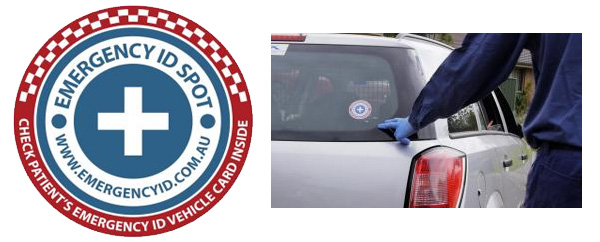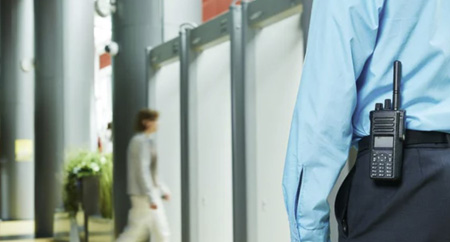A new patient information program designed to improve emergency care for people involved in car crashes or suffering serious illness at home has been released in Australia, following the success of similar programs in the United States which have been credited with saving thousands of lives.
What is an ID Spot
Emergency ID Spots are placed on a vehicle’s rear window or the front door of a house to alert police, paramedics and other first responders that a patient’s critical health information can be found inside, either in the glove box, on the sun visor or on the fridge.
The information, such as allergies, prescription medications, previous surgeries, pre-existing conditions and other vital information can ensure the best emergency treatment is administered during the ‘golden hour’ which is the first 60 minutes. So after a serious accident or acute health event treatment can be more efficient and effective which can often mean the difference between life and death.
By including a photograph, emergency services personnel can check who the information relates to, while the inclusion of a list of emergency contact and next of kin details mean your loved ones can be informed immediately. Founder and director of Emergency ID Australia, Nicole Graham, stated that as a former police officer she had come across countless people who were unconscious, disoriented or in so much pain they were not able to pass on critical information to carers.
Check out the video below to see the ID Spots in action..
What Does the ID Spot Mean for the Average Person?
To put it in perspective a reported three million drivers were involved in a car accident in the past five years in Australia, and even in less serious crashes people often go into shock, which means they find it hard to remember important details or communicate clearly to emergency services personnel.
If you or a loved one has a serious allergy to medications, a heart condition, diabetes or epilepsy for example, you can rely on the Emergency ID Spot to tell emergency services that vital information, even if you can’t.
Industry Perspective
The Emergency ID Spots have received the backing of the Westpac Rescue Helicopter Service. General Manager Richard Jones who said his organisation had thrown its support behind this initi-ative.
The ability to be armed with immediate information about a patient’s allergies, medications and conditions, allows emergency services the opportunity to provide the very best medical care on the spot. With many in the medical field wishing everyone had the Emergency ID Spot in their vehicles and in their homes, as they’re sure the simple sticker will certainly help save lives.
It’s expected the Emergency ID Spots will be particularly popular with seniors, travellers and grey nomads. This is due to people who are older are far more likely to have multiple medical conditions, take medication routinely, and be more vulnerable to critical injury in an accident, or likely to suffer a serious medical problem at home.
The Spots are also expected to prove valuable for transport and trucking companies and other professional drivers. They also provide peace of mind for families who need to know their children will receive proper care if the parents are unable to pass on life saving information.
Emergency ID Australia have also stated they will donate 10% of sales from the ID Spots to the Westpac Rescue Helicopter Service.
Overall this simple device could lead to progressively more efficient medical facilitation throughout the country, with supporters assuring that society will be able to SPOT the difference!







